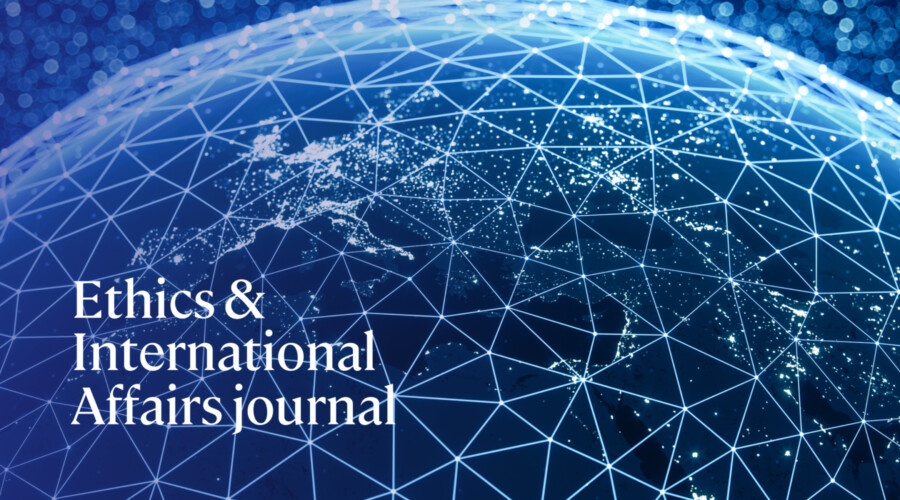Robert Picciotto (reviewer)
In contrast to recent best sellers that ridicule aid planners and castigate aid managers, such as William Easterly's The White Man's Burden, these two new works by Roger C. Riddell and Carol Lancaster display a sober understanding of aid challenges, present a balanced view of the context within which aid operations take place, and provide valuable insights about the workings of aid organizations. Taken together they represent an important and timely contribution to the exploding literature on international development and should be required reading for students, policy-makers, and practitioners.
The need for competent analyses of foreign aid—the complex, innovative, and by now indispensable instrument of international relations—is urgent. Increased public support for global poverty reduction underlies recent increases in the share of national incomes allocated to aid. But unless aid results become aligned with the promises made to the electorates of donor countries, the upward trend will not be sustained. Unfortunately, halfway to the finishing line (2015), the Millennium Development Goals solemnly endorsed by all heads of state at the turn of the century seem out of reach for most developing countries.
We know a lot about what it takes to make national economies grow: Adam Smith laid the foundations of classical economics in the eighteenth century when he sought to elucidate the "progress towards opulence and improvement" of nations. Thanks to him and the intellectual pioneers that followed, our understanding of the antecedents of economic development has greatly expanded. By contrast, we still know little about how aid can increase its contribution to poverty reduction: the notion that rich countries have an interest (indeed an obligation) to help alleviate misery in faraway lands is only about a half century old.
Foreign aid is the "new kid on the block" of international affairs, and much of the aid-effectiveness literature has generated more heat than light. Critics on the extreme right describe aid as a boon to bureaucrats and dictators. Critics on the radical left depict aid as a sinister instrument of postcolonial domination that oppresses its intended beneficiaries. Most aid agencies, lacking independent evaluation, make excessive claims regarding the development impact of their operations. And the new cottage industry of cross-country econometric studies has done little to illuminate the reality of aid.
In sum, dispassionate and objective examinations of foreign aid, such as the two studies authored by Riddell and Lancaster, are infrequent. Both of their books were written "from the inside as well as the outside" by development scholars who have also been associated with the management of aid organizations at a senior level. Roger C. Riddell served as a research fellow at the Overseas Development Institute and as international director of Christian Aid and wrote two influential books on foreign aid before producing Does Foreign Aid Really Work?
Similarly, Carol Lancaster, now an associate professor of Georgetown University, was USAID deputy administrator before writing an authoritative book about aid to Africa and crafting Foreign Aid: Diplomacy, Development, Domestic Politics, her nuanced review of aid purposes, processes, and practices in five major donor countries (the United States, Japan, France, Germany, and Denmark). Her analysis brings into sharp relief some of the issues tackled at the generic level by Riddell, whose massive tome synthesizes a great deal of material about the aid business, its historic evolution, and its development impact.
Both authors recognize that aid is here to stay and will continue to play a major role in our increasingly interconnected world. Both books map with clarity and care the diverse rationales of development cooperation and the major drivers of change that have affected the aid enterprise since its pioneering days. Neither scholar has evinced reluctance to pinpoint the ailments that afflict the aid industry today—a $100 billion business involving at least eighty development assistance agencies and a quarter million officials.
Their respective inquiries start with the same fundamental question: Why aid? Development assistance has always faced public legitimacy problems: the people for whose benefit aid agencies are supposed to work are not the same as those from whom resources are obtained. In a world of states, it is far from obvious that governments should use scarce tax revenues for the well-being of anyone other than their own citizens. Absent the accountability of the ballot box, jeremiads about the travails of aid will always find a ready market.
Aid critics present aid as a failure because the number of poor people worldwide has increased, while aid advocates note that, as a share of the total population, poverty dropped worldwide for the period 1980-2000—over and above the considerable improvements in socioeconomic indicators over the same period. Similarly, aid critics depict aid expenditures as massive ($2,300 billion over five decades), while aid advocates note that this is less than 4¢ a day for the 3 billion people who live on less than $2 a day.
While both authors reject this simplistic tug-of-war, they look at aid through different lenses. Riddell describes foreign aid as a global enterprise dedicated to the welfare of poor and disadvantaged individuals, while Lancaster views it as the fruit of domestic political processes in donor countries. Whereas Riddell analyses the ethical justification of aid, Lancaster's central purpose is to uncover its underlying political logic, and she steers clear of the development impact assessments that make up about half of Riddell's book.
Riddell's formidable compilation of evaluation sources ultimately comes up with an answer to the question posed by the book's title. It is unsurprising but correct: The development cooperation industry has made a positive difference but could do far better. In other words, aid can work and often does, but it can also do harm and needs far better management and evaluation.
Both Riddell and Lancaster point out that the purposes of aid are mixed—humanitarian relief, commerce, culture, protection of human rights, democracy promotion, and the global fight against the proliferation of problems without passports (for example, environmental stress, infectious diseases, weapons proliferation, transnational terrorism, and so forth). Ethical concerns dominate, but considerations of national self-interest inevitably come into play. Lancaster concludes that assessing aid as if poverty reduction is its only motivation is self-defeating.
Specifically, recent aid increases have been justified by the premise that it will generate global poverty reduction through greater selectivity, enhanced ownership, and improved aid management. Yet a substantial share of the aid actually provided by donor countries aims at diplomatic and geopolitical goals, many of which are not developmental and escape measure in existing monitoring and evaluation systems. Furthermore, increases in aid commitments have not been matched by improvements in management capacity either at the national level or, given the increased fragmentation of aid delivery, at the international level. Together these two factors are bound to generate a backlash.
While their diagnostics of what ails aid are consistent, Riddell and Lancaster reach dramatically different conclusions regarding its future. They are both equally concerned about the mismatch between the ends and means of aid. They are aware that global peace and prosperity will not be assured without a coherent application of all instruments of international cooperation—that is, not only aid but also trade, foreign direct investment, migration, defense, diplomacy, and so on. And they are concerned that in an era of globalization, to attribute all good or poor development outcomes to aid is a dangerous fallacy.
Nonetheless, there are revealing differences between their prescriptions. The cosmopolitan approach adopted by Riddell leads to ambitious proposals for reshaping the aid architecture. He visualizes an international body that would oversee all aid. Compulsory contributions would feed into a single international fund. Aid would be allocated according to need and channeled to governments or, where capacity is missing, to an independent national implementation agency. International norms would be applied to nongovernmental organizations operating in poor communities. An international task force on public information about aid would promote transparency and rigor in reporting about the impact of all aid operations.
This top-down vision stands in sharp contrast with the prospects visualized by Lancaster. She eschews policy recommendations in favor of tentative conjectures that depict aid as a complex endeavor that will continue to be shaped by national ideas, interests, institutions, and organizations. Specifically, she argues that the way the public discourse about aid is framed will determine its future policy orientations. Equally, the diverse ways in which aid delivery is organized will influence its effectiveness and impact. Given her careful analysis of the force field of development assistance in major donor countries, the systemic reforms sketched by Riddell seem unlikely to materialize: official aid will continue to be shaped by public concerns with human betterment combined with national imperatives of security and stability.
Meanwhile, the diversification of aid channels (fully documented in Riddell's opus) is likely to continue such that aid will become increasingly volatile, complex, and decentralized. In particular, the advent of large-scale giving by rich individuals and private foundations; the rapid buildup of international reserves by China, India, and other middle-income countries; the growing clout of a far-flung and fragmented international voluntary sector; and the rise of public-private partnerships designed to ensure the sustainability of large-scale direct foreign investment projects will mean a competitive aid world of "many to many" rather than the logically structured global establishment visualized by Riddell.
Norms and independent oversight will undoubtedly be needed to regulate these diverse activities and ensure a modicum of coherence among them, but it seems likely that they will be governed by disaggregated public-private-voluntary networks connected through the new information technologies rather than through central bureaucracies. Making such networks responsive to the needs of the poor and oppressed will continue to be the task of the international civil society.
In sum, rather than continue to engage in fruitless debate as to whether "aid works," the focus of public debate should focus on how to deal with the urgent challenges of global poverty and human insecurity in highly diverse operating contexts and through a variety of aid instruments. In this noble task, the diagnostics of the Riddell and Lancaster books will for a long time serve as helpful guides.
-ROBERT PICCIOTTO
King's College, London



